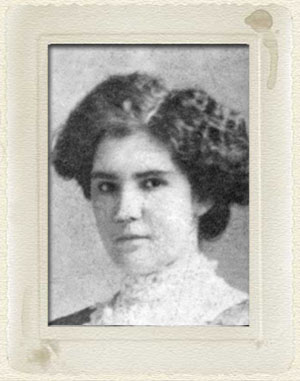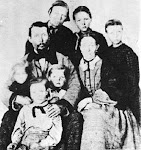“While in the Battalion Zemira carried a gun and ruck-sack the same as any other soldier. Food was scarce, and because he was not a regular soldier, his mother, who was the cook, would purposely burn the bread so the Officers would cut the crusts off, and this she would take to Zemira. He said they were better to him than pie would be years later.”50
2.04.2010
(30) Mormon Battalion,1846-1847
The Battalion consisted of five companies, averaging a little over 100 men per company. Ebenezer Brown was chosen as 2nd Sergeant of Co. A. Phebe offered to go and was given the privilege of accompanying her husband as a laundress and cook. Zemira asked to go with them and, although he was not quite 15, he was accepted as an aide to Captain Allen. They were among those who enlisted in June.
There would have been the children to consider before Phebe or her husband could have enlisted. From information available we learn that Phebe’s daughter Lydia had married sometime in 1846 in Iowa, so all of Phebe’s children were married except Zemira and Rhoda who was 12 years old by then. She was taken into her Uncle Isaac Palmer’s home, until she could be re-united with her mother later in the western valley. Ebenezer’s oldest daughter was 19, and she and the three other children, who were all in their ‘teens’ by then, somehow would manage there on the plains, and then they also would be re-united with their parents in the West.47
Brigham Young’s parting blessing to the Battalion members included some good counsel and advice, and he promised them that they would pass through the ordeal without a shot being fired at them. The soldiers were marched to Ft. Leavenworth, Kansas where they were outfitted with supplies, guns, and $42 per man as clothing money for the year. That amounted to a total of $21,000. A portion of that money was given to the Church to be used for the support of the Battalion members’ families in Iowa, to purchase much needed food, etc., to last through the winter and to supply their needs to complete the journey next Spring to the western Valley.48
The Battalion march was very difficult, and those who became sick, or weakened, were turned back to Pueblo, Colorado leaving only 350 soldiers to continue. Col. James B. Allen was among those who became ill, and he died within days after the Battalion reached Fort Leavenworth. One reference here noted: “Zemira served as aide to Col. James Allen until his death; then to George B. Sanderson from Ft. Leavenworth to Santa Fe; thence to Lieut. Lorenzo Clark until the Corps was discharged.”49
“While in the Battalion Zemira carried a gun and ruck-sack the same as any other soldier. Food was scarce, and because he was not a regular soldier, his mother, who was the cook, would purposely burn the bread so the Officers would cut the crusts off, and this she would take to Zemira. He said they were better to him than pie would be years later.”50
“While in the Battalion Zemira carried a gun and ruck-sack the same as any other soldier. Food was scarce, and because he was not a regular soldier, his mother, who was the cook, would purposely burn the bread so the Officers would cut the crusts off, and this she would take to Zemira. He said they were better to him than pie would be years later.”50
47- Ebenezer Brown & Descendants – Ebenezer’s young children stay with older sister
48- The Restored Church, p. 238 – the Battalion outfitted with clothing and funds
49- Daniel Tyler, A Concise History of the Mormon Battalion in the Mexican War, 1846-47, p. 125
50- Dec. of G. Palmer & P. Draper, p. 446 – Hungry Zemira eats crusts
Subscribe to:
Post Comments (Atom)
Contributors

Lucile Brubaker (and her mother Lenna Cox Wilcock) are also contributing to this blog.





No comments:
Post a Comment